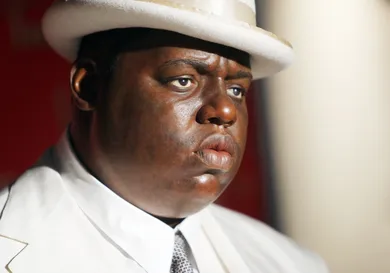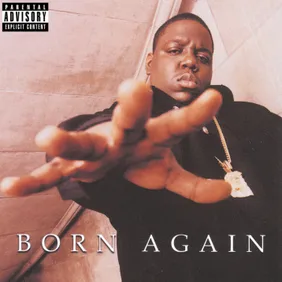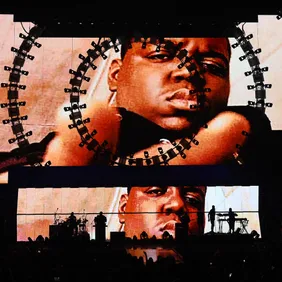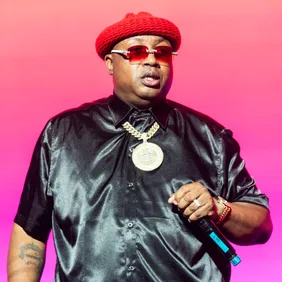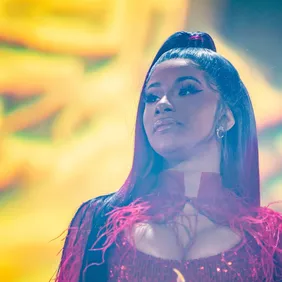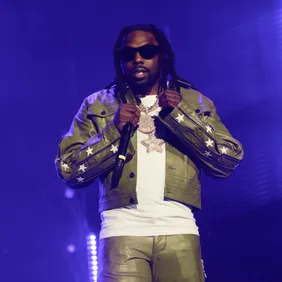I was five years old when Life After Death dropped, 20 years ago to the day. The Notorious B.I.G. had just died 17 days prior. I wouldn't hear any of his music until about seven or eight years later when I borrowed a friend's CD on a middle school field trip, but by that time I definitely already knew who Biggie was. The Brooklyn star was only 24 (one year younger than I am now) and two albums into his career when he was fatally shot, but even in a small, mostly white town in Washington State, his posthumous reputation preceded his music. The words "Tupac and Biggie" already meant a lot of different things to a kid who at that time, had probably only heard "Changes": a warning about the dangers and inherent evil of "gangsta rap," a sign of maturity and hardness for kids who owned their CDs or wore shirts emblazoned with their faces, a recent addendum to the pantheon of music geniuses gone too soon (like Kurt Cobain, Jimi Hendrix, Otis Redding, etc.).
Tupac and Biggie both predicted their own deaths on multiple occasions. Song titles like "If I Die 2Nite," "Ready To Die," "Suicidal Thoughts," and "Death Around the Corner" popped up on albums they released while still living, no doubt products of an East/West rivalry centered on their creators that had already led to threats, diss tracks, and in Tupac's case, a non-lethal shooting in 1994. What mythologized Biggie more than anything else, though, was Life After Death.
It's simply insane to think about an album that's this obsessed with death arriving just over two weeks after the murder of its creator. This was the CD age, so there was no way that the album could've been altered at all in that 17-day interim-- the hearse on the cover, the simulated death by gunshot that kicks off the album, those death threat messages at the beginning of "My Downfall," the eerily on-the-nose "You're Nobody (Til Somebody Kills You)"-- all were included on the final draft that Big turned in while still breathing. That's absolutely crazy. Other rappers have mused about their own premature deaths soon before they were actually killed, but none with the certainty or timing of Life After Death. David Bowie tried to pull some similar shit with last year's Blackstar, but despite the general public being unaware of his terminal cancer, he was, which substantially cuts down on the Nostradamus factor.
This shock value, obviously along with the success of Ready to Die (which to date has sold far fewer copies than LAD), led to the album being a huge, Diamond-selling hit. If you're a rap fan or a curious, impressionable kid, how are you not going to buy an album in which the best rapper alive recently deceased predicts his own death? Life After Death is currently the fifth highest selling rap album of all time, behind albums by Eminem, MC Hammer, and Nelly, and you can attribute at least some of that success to right-place-right-time poignancy akin to Wiz Khalifa getting his first #1 song in the wake of Paul Walker's death, or to use this example again, Blackstar becoming the first of David Bowie's 25 studio albums to reach #1 in the US.
If Life After Death was, like its predecessor, filled exclusively with hard-edged mafioso rap, its commercial achievements would be almost unbelievable, but that was decidedly not the case. In addition to being a post-mortem sensation, it doubled as a key fulcrum in Bad Boy Records' pivot from niche street rap label to world-conquering pop behemoth. In between the release of Biggie's two albums, Diddy had pushed out Platinum-selling projects by Faith Evans, Total, and 112, all smooth R&B that was pretty far removed from the Biggie and Craig Mack albums that were the label's first two releases. This high-gloss sound made its way onto about half of Life After Death via songs like "Mo Money Mo Problems," "Fuck You Tonight," and the 112-assisted cuts "Miss U" and "Sky's The Limit," which all contrasted with the album's grittier, more menacing side. In the most jarring instance, Biggie goes from rapping over Schooly D's "P.S.K. What Does It Mean" (often cited as the first gangsta rap song) on an interlude that leads directly into the chopped up Diana Ross disco sample of "Mo Money Mo Problems." Life After Death was never going to be as cohesive as the narrative-oriented Ready To Die, but in straddling the pop and gangsta sides of hip hop, it paved the way for Bad Boy's sophomore class of Ma$e, The LOX, Black Rob, and Shyne.
But what Life After Death lacked in the thematic cohesion department, it made up for with the best storytelling rap ever laid to wax, period. On the album's character-driven songs-- "N****s Bleed," "I Got a Story to Tell," and "Ten Crack Commandments" being the most focused-- Biggie delivers Hollywood-ready scripts filled with tension, rising actions, and climaxes like he's a seasoned screenwriter. Whether he's telling you about his shady friend Arizona Ron or himself cuckolding and robbing Knicks player Anthony Mason, Big rapped in ways no one ever had, or ever has since. Take a random four bars out of "Ten Crack Commandments"-- say "The cheddar breed jealousy 'specially/If that man fucked up, get yo' ass stuck up/Number 2: never let 'em know your next move/Don't you know Bad Boys move in silence and violence?"-- and you've got lines that'll pop up interpolated in songs by Lil Wayne, Danny Brown, Denzel Curry, and many others. These Life After Death tracks are as important as "How To Rap 101" guides as they are important as classic bangers.
The album doesn't hit its most legendary run until the end though. After the Too Short-assisted pimping anthem "The World is Filled...," the phoned-in death threats at the start of "My Downfall" begin to flood in, signifying that the next fifteen minutes are going to much heavier than the 94 minutes that preceded them. Biggie boasts about his riches yet again on that first track, but it's through the eyes of jealous onlookers, making all of the Lexuses with the automatic start, shrimp a la carte, bitches from Brussels, clams, and mussels seem more like targets painted on Big's back than luxuries. Then comes "Long Kiss Goodnight," the most ruthless piss-on-a-grave track that's ever been released. It's clearly about Tupac's death, as Big references a car accident him and Lil Cease got in three days after the fatal shooting and rumors that Pac had been raped in prison. It's so dark that Big had to get RZA, who rarely worked outside of the Wu-Tang Clan, to lace him with a gothic Al Green sample. On both of these tracks, Diddy puts massive distortion on his voice and rants like no one else can-- combined with the similar approach on Nas' "Hate Me Now," it might represent his best vocal performance of all time.
"You're Nobody (Til Somebody Kills You)" is the perfect closer, with Big sounding impossibly confident about what the future holds for his young life, and the beat splitting the difference between the album's poppy and gritty sounds. It is, in my opinion, what truly made Biggie a legend, what made it certain that kids would know his name for years to come, even if they had never heard his music. Personally, I don't think Life After Death matches Ready To Die in terms of a well-packaged, well-structured album, but there's no question that it's the more important release in terms of Big's legacy. On it, he showed he could do any style of rap that existed at that point-- sex jams, murder music, funky Bad Boy pop rap, ballads, storytelling opuses, triplet-flowing Midwest rap, pimp rap, even West Coast rap-- and make himself into a larger-than-life persona while doing so. It's going to be a long time until we have another piece of art that's this eerily predictive of the future while also being one of the most popular pieces in its medium. Rest in peace to Biggie the prophet, and Biggie the worldwide sensation.
